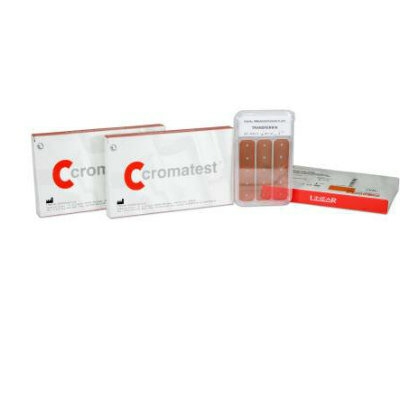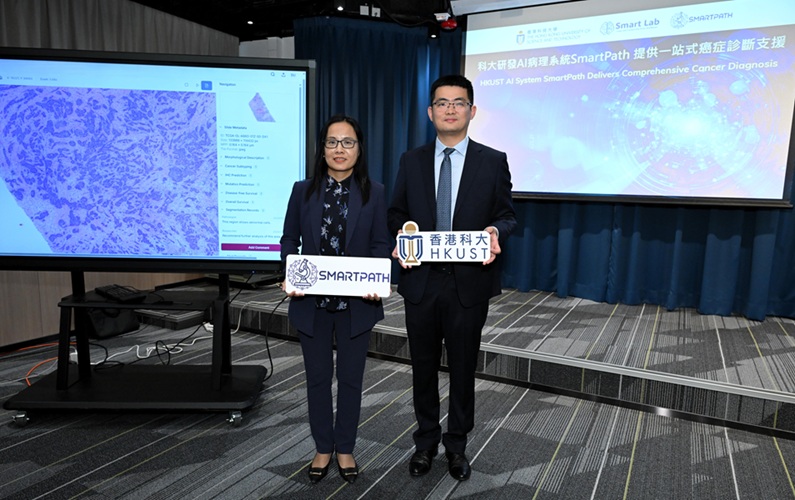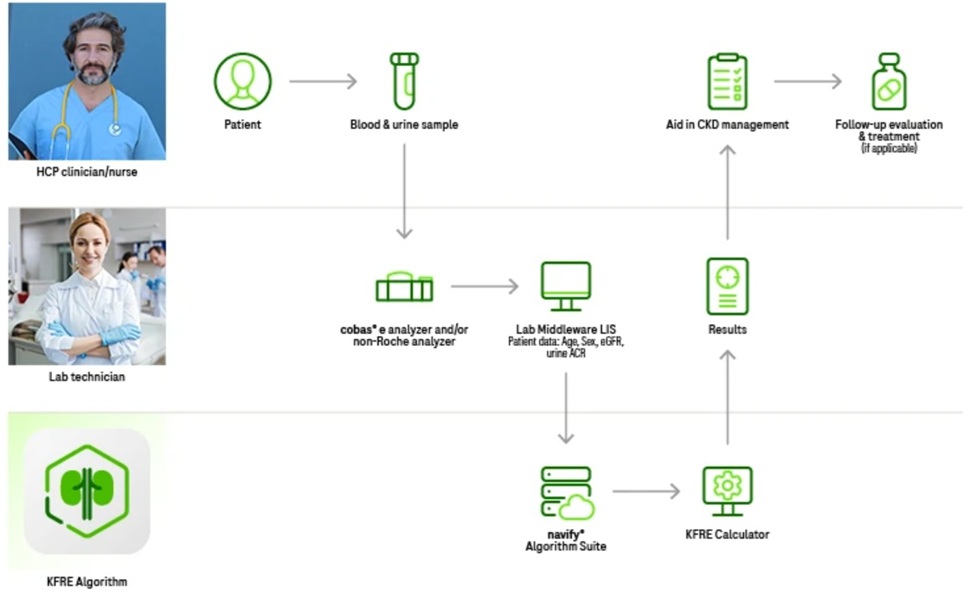Next Generation Sequencing Developed for Monitoring of Mixed Chimerism
|
By LabMedica International staff writers Posted on 07 Jan 2021 |

Image: Electron micrograph of an hematopoietic stem cell that can be obtained from the umbilical cord blood, adult bone marrow, and peripheral blood (Photo courtesy of Donald W. Fawcett, MD).
Hematopoietic stem-cell transplantation (HSCT) is the only curative treatment for patients with hematological malignant and non-malignant diseases. There are more than 50,000 stem cell transplants are carried out annually worldwide and the number is increasing.
Patients undergoing HSCT face at least four different complications such as toxicity related to treatment, infections, recurrence of the underlying malignant disease and immunological reactions including Graft-versus-Host Disease (GVHD). Chimerism analysis is useful to predict threatening relapse, especially when leukemia cell-lineage-specific chimerism analysis is performed.
Clinical immunologists at the Karolinska University Hospital (Stockholm, Sweden) included in a study a total of 651 samples, consisting of 348 artificial samples and 303 clinical samples to evaluate the performance of a novel Next Generation Sequencing (NGS)-based assay (Devyser AB, Stockholm, Sweden) to monitor mixed chimerism (MC) and compare its technical capacity to established techniques for chimerism analysis. Artificial and clinical samples with increasing amounts of patient DNA were compared using real-time PCR detection of indels and SNP, fragment analysis of short-tandem repeats (STR) and NGS analysis of indels.
The team used an in-house STR marker analysis for the chimerism analysis. Additional studies using a commercial STR-based chimerism assay were performed running samples in triplicates with the Powerplex 16 system (Promega Biotech AB, Nacka, Sweden). The Devyser Chimerism NGS kit is based on targeted sequencing of 24 indels and measuring their allele frequency. Each sample is amplified using a single multiplex PCR reaction containing 24 primer pairs to create a target amplicon library (PCR1). In a second PCR reaction (PCR2), sequencing adapters including unique index sequences are introduced into each amplicon, enabling pooling of up to 96 samples in each sequencing run.
The scientists reported that Real-time PCR displayed excellent sensitivity (>0.01%), but poor accuracy (>20 CV% at MC > 20%), while fragment analysis exhibited good accuracy (<5 CV% at MC > 20%) with limited sensitivity (>2.5%). In contrast, NGS chimerism demonstrated a sensitivity (>0.1%) equal to real-time PCR and an accuracy equal or better than STR analysis throughout an extensive range of mixed chimerism (0.1 – 100%). To evaluate performance of the separate techniques for chimerism determination, 75 retrospective patient monitoring samples (3–7 weeks post-HSCT) with low (<5%), intermediate (5–20%) or high mixed chimerism (>20%) were analyzed.
The authors concluded that taken together, the novel NGS-based chimerism assay can replace both STR-based and real-time PCR based assays through improved diagnostic performance and usability. The study was published in the January, 2021 issue of the journal Clinica Chimica Acta.
Related Links:
Karolinska University Hospital
Devyer AB
Promega Biotech AB
Patients undergoing HSCT face at least four different complications such as toxicity related to treatment, infections, recurrence of the underlying malignant disease and immunological reactions including Graft-versus-Host Disease (GVHD). Chimerism analysis is useful to predict threatening relapse, especially when leukemia cell-lineage-specific chimerism analysis is performed.
Clinical immunologists at the Karolinska University Hospital (Stockholm, Sweden) included in a study a total of 651 samples, consisting of 348 artificial samples and 303 clinical samples to evaluate the performance of a novel Next Generation Sequencing (NGS)-based assay (Devyser AB, Stockholm, Sweden) to monitor mixed chimerism (MC) and compare its technical capacity to established techniques for chimerism analysis. Artificial and clinical samples with increasing amounts of patient DNA were compared using real-time PCR detection of indels and SNP, fragment analysis of short-tandem repeats (STR) and NGS analysis of indels.
The team used an in-house STR marker analysis for the chimerism analysis. Additional studies using a commercial STR-based chimerism assay were performed running samples in triplicates with the Powerplex 16 system (Promega Biotech AB, Nacka, Sweden). The Devyser Chimerism NGS kit is based on targeted sequencing of 24 indels and measuring their allele frequency. Each sample is amplified using a single multiplex PCR reaction containing 24 primer pairs to create a target amplicon library (PCR1). In a second PCR reaction (PCR2), sequencing adapters including unique index sequences are introduced into each amplicon, enabling pooling of up to 96 samples in each sequencing run.
The scientists reported that Real-time PCR displayed excellent sensitivity (>0.01%), but poor accuracy (>20 CV% at MC > 20%), while fragment analysis exhibited good accuracy (<5 CV% at MC > 20%) with limited sensitivity (>2.5%). In contrast, NGS chimerism demonstrated a sensitivity (>0.1%) equal to real-time PCR and an accuracy equal or better than STR analysis throughout an extensive range of mixed chimerism (0.1 – 100%). To evaluate performance of the separate techniques for chimerism determination, 75 retrospective patient monitoring samples (3–7 weeks post-HSCT) with low (<5%), intermediate (5–20%) or high mixed chimerism (>20%) were analyzed.
The authors concluded that taken together, the novel NGS-based chimerism assay can replace both STR-based and real-time PCR based assays through improved diagnostic performance and usability. The study was published in the January, 2021 issue of the journal Clinica Chimica Acta.
Related Links:
Karolinska University Hospital
Devyer AB
Promega Biotech AB
Latest Molecular Diagnostics News
- Genomic Test Could Reduce Lymph Node Biopsy Surgery in Melanoma Patients
- Urine Test Could Replace Painful Kidney Biopsies for Lupus Patients
- Blood Test Guides Post-Surgical Immunotherapy for Muscle-Invasive Bladder Cancer
- Mitochondrial DNA Mutations from Kidney Stressors Could Predict Future Organ Decline
- Blood Test Could Predict Bariatric Surgery Outcomes in Teenagers
- ctDNA Blood Test to Help Personalize Postsurgical Colon Cancer Treatment
- AI Powered Blood Test Predicts Suicide Risk in Bipolar Patients
- DNA Sensor Enables Molecular Detection from Single Blood Drop
- DNA-Powered Test Accurately Detects E. Coli Lookalike Bacteria
- World’s Fastest DNA Sequencing Technique to Revolutionize NICU Genomic Care
- Blood Test Uses Cell-Free DNA to Detect ALS Faster and More Accurately
- Multi-Cancer Early Detection Blood Test Increases Cancer Detection
- Portable Label-Free Device Tracks Alzheimer's Disease in Real Time
- Liquid Biopsy Test Enables Early Detection of ICI-Related Myocarditis
- Rapid POC Diagnostic Test Detects Asymptomatic Malaria Cases
- Improved DNA Sequencing Tool Uncovers Hidden Mutations Driving Cancer
Channels
Clinical Chemistry
view channel
VOCs Show Promise for Early Multi-Cancer Detection
Early cancer detection is critical to improving survival rates, but most current screening methods focus on individual cancer types and often involve invasive procedures. This makes it difficult to identify... Read more
Portable Raman Spectroscopy Offers Cost-Effective Kidney Disease Diagnosis at POC
Kidney disease is typically diagnosed through blood or urine tests, often when patients present with symptoms such as blood in urine, shortness of breath, or weight loss. While these tests are common,... Read moreHematology
view channel
Viscoelastic Testing Could Improve Treatment of Maternal Hemorrhage
Postpartum hemorrhage, severe bleeding after childbirth, remains one of the leading causes of maternal mortality worldwide, yet many of these deaths are preventable. Standard care can be hindered by delays... Read more
Pioneering Model Measures Radiation Exposure in Blood for Precise Cancer Treatments
Scientists have long focused on protecting organs near tumors during radiotherapy, but blood — a vital, circulating tissue — has largely been excluded from dose calculations. Each blood cell passing through... Read more
Platelets Could Improve Early and Minimally Invasive Detection of Cancer
Platelets are widely recognized for their role in blood clotting and scab formation, but they also play a crucial role in immune defense by detecting pathogens and recruiting immune cells.... Read more
Portable and Disposable Device Obtains Platelet-Rich Plasma Without Complex Equipment
Platelet-rich plasma (PRP) plays a crucial role in regenerative medicine due to its ability to accelerate healing and repair tissue. However, obtaining PRP traditionally requires expensive centrifugation... Read moreImmunology
view channel
Blood-Based Liquid Biopsy Model Analyzes Immunotherapy Effectiveness
Immunotherapy has revolutionized cancer care by harnessing the immune system to fight tumors, yet predicting who will benefit remains a major challenge. Many patients undergo costly and taxing treatment... Read more
Signature Genes Predict T-Cell Expansion in Cancer Immunotherapy
Modern cancer immunotherapies rely on the ability of CD8⁺ T cells to rapidly multiply within tumors, generating the immune force needed to eliminate cancer cells. However, the biological triggers behind... Read moreMicrobiology
view channel
Fast Noninvasive Bedside Test Uses Sugar Fingerprint to Detect Fungal Infections
Candida bloodstream infections are a growing global health threat, causing an estimated 6 million cases and 3.8 million deaths annually. Hospitals are particularly vulnerable, as weakened patients after... Read more
Rapid Sepsis Diagnostic Device to Enable Personalized Critical Care for ICU Patients
Sepsis is a life-threatening condition that occurs when the body’s response to infection spirals out of control, damaging organs and leading to critical illness. Patients often arrive at intensive care... Read morePathology
view channel
Tears Offer Noninvasive Alternative for Diagnosing Neurodegenerative Diseases
Diagnosing and monitoring eye and neurodegenerative diseases often requires invasive procedures to access ocular fluids. Ocular fluids like aqueous humor and vitreous humor contain valuable molecular information... Read more
AI-Powered Method Combines Blood Data to Accurately Measure Biological Age
Chronological age tells us how many years we’ve lived, but not how quickly our bodies are ageing. Some people stay healthy well into their 80s or 90s, while others experience decline much earlier.... Read moreTechnology
view channel
Embedded GPU Platform Enables Rapid Blood Profiling for POC Diagnostics
Blood tests remain a cornerstone of medical diagnostics, but traditional imaging and analysis methods can be slow, costly, and reliant on dyes or contrast agents. Now, scientists have developed a real-time,... Read more
Viral Biosensor Test Simultaneously Detects Hepatitis and HIV
Globally, over 300 million people live with Hepatitis B and C, and 40 million with HIV, according to WHO estimates. Diagnosing bloodborne viruses such as HIV and Hepatitis B and C remains challenging in... Read moreIndustry
view channel
Advanced Instruments Merged Under Nova Biomedical Name
Advanced Instruments (Norwood, MA, USA) and Nova Biomedical (Waltham, MA, USA) are now officially doing business under a single, unified brand. This transformation is expected to deliver greater value... Read more




















